Tokyo to Kamakura: Train Routes, JR Pass, Cost, and Distance

Kamakura, with its temples, giant Buddha, and seaside, is about 50 km from Tokyo, accessible in 50-60 mins by JR train. Discover the best routes and their fees.
How to Get to Kamakura from Tokyo

The old capital of Kamakura, accessible from Tokyo in just one hour, has a relaxed ambiance with its many temples, shrines, and rich greenery.
Tsurugaoka-Hachimangu Shrine, famous for its beautiful cherry blossoms, Kotoku-in Temple with its Great Buddha statue (Daibutsu), and Hasedera Temple known for its elegant June hydrangeas are all found in the Kamakura area.
We introduce the easiest and best ways to reach Kamakura from Tokyo.
Tokyo to Kamakura, Routes, Fees and more
1. JR Yokosuka Line From Shinagawa or Tokyo Station
2. JR Shonan Shinjuku Line from Ikebukuro, Shinjuku or Shibuya Station
3. Ride the whimsical the Local Enoden Train in Kamakura
4. From Shinjuku Station to Fujisawa Station
5. From Tokyo Station to Fujisawa Station
6. Does the JR Pass Cover the Journey from Tokyo to Kamakura?
7. Tokyo to Kamakura Bus
8. Does the Bullet Train Go to Kamakura?
9. What is the Distance from Tokyo to Kamakura?
Take JR Yokosuka Line from Tokyo Station or Shinagawa Station
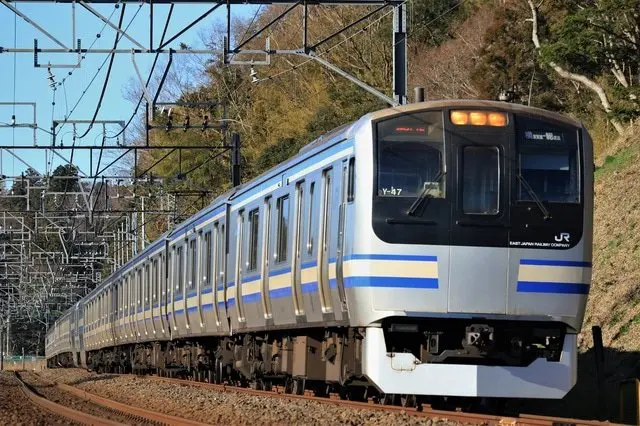
Taking the JR Yokosuka Line is the fastest and simplest method to reach Kamakura. It goes directly to Kamakura Station from Tokyo Station. The ride costs 940 yen one-way and the ride takes around 57 minutes. You can take the same train from Shinagawa Station for 730 yen. Ride for around 47 minutes.
↑ Return to the top of article.
Take JR Shonan Shinjuku Line from Ikebukuro, Shinjuku or Shibuya Station
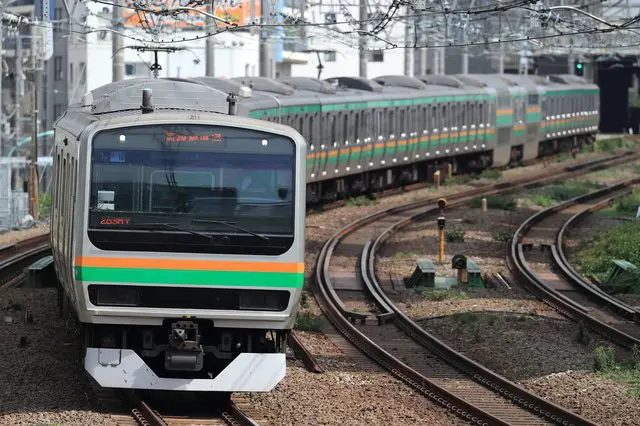
If you are taking the train from Shinjuku, Shibuya, or Ikebukuro stations, you should take the JR Shonan Shinjuku Line to Kamakura.
The coastal area in Kanagawa Prefecture facing Sagami Bay is called “Shonan”, so the Shonan Shinjuku Line connects Tokyo and this area that includes Kamakura. It takes 63 minutes from Ikebukuro, 57 minutes from Shinjuku, and 52 minutes from Shibuya to reach Kamakura. The fare from all three stations is 940 yen.
Double Check the Train's Destination Before Riding
Please be careful not to go in the wrong direction when taking the JR Shonan Shinjuku Line.
If it’s bound for Zushi, Yokosuka, or Kurihama, the train goes directly to Kamakura. However, if the train is bound for Kozu or Odawara, you have to change trains at Ofuna Station and get on the JR Yokosuka Line. Please double-check the destination of your train before you get on.
You can catch JR Shonan Shinjuku Line trains on Platform 2 in Ikebukuro Station, Platform 4 in Shinjuku Station, or Platform 4 in Shibuya Station.
↑ Return to the top of article.
If You Want to Take the Local Enoden Train in Kamakura
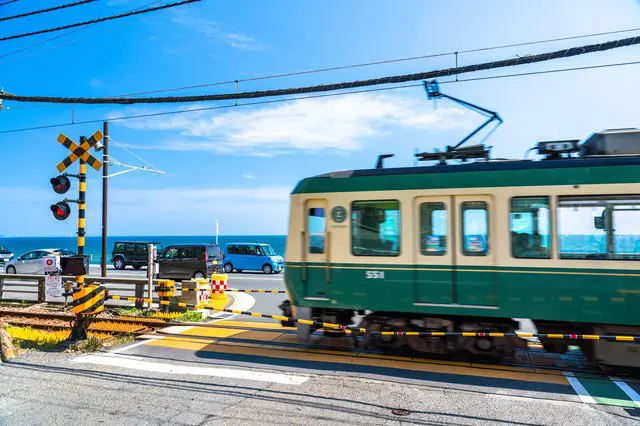
If you want to visit not only Kamakura but also its surrounding areas or if you want to get off the train on the way to Kamakura and take a stroll, take the Enoden from Fujisawa Station.
The Enoden, or Enoshima Electric Railway, is a ten-kilometer long railway that connects Fujisawa Station and Kamakura Station in Kanagawa Prefecture. The train goes along the coast on a scenic route, allowing you to see some of the gorgeous scenery around the Kamakura area from the comfort of the train. From Fujisawa to Kamakura the ride takes 34 minutes and the fare is 310 yen.
Even though it is a small local train, Enoden has become very famous for its nostalgic atmosphere, which attracts tourists from all over Japan and even from overseas. Here is how you can get to Fujisawa Station from Tokyo.
↑ Return to the top of article.
From Shinjuku Station to Fujisawa Station
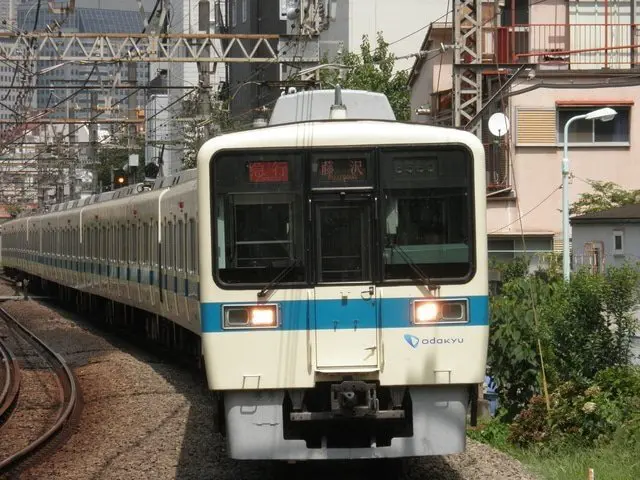
If you want to go directly to Fujisawa Station, take the Odakyu Odawara Line Express bound for Fujisawa. It takes 56 minutes and the fare is 600 yen.
The Shonan Shinjuku Line Rapid Train will also take you directly to Fujisawa Station, but the fare is more expensive (990 yen).
↑ Return to the top of article.
From Tokyo Station to Fujisawa Station
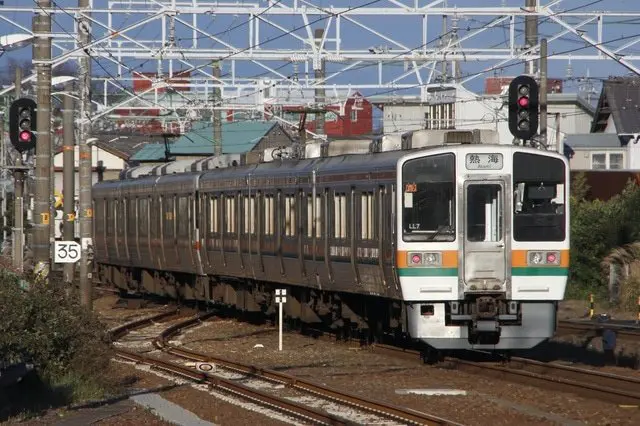
If you want to go from Tokyo Station to Fujisawa Station, take the JR Tokaido Line bound for Numazu or Atami. These trains go directly to Fujisawa Station. The fare is 990 yen and you can take the train from Platform 10. It takes about 50 minutes.
The Enoden is a local train that passes through peaceful residential areas and is perhaps one of the most scenic train routes in the Kanto area. Why not enjoy the nostalgic scenic route on the way to visiting the old capital, Kamakura?
If you would like to read more information on the Enoden and the surrounding area, please take a look at these articles:
Read also
↑ Return to the top of article.
Does the JR Pass Cover the Journey from Tokyo to Kamakura?
Yes, the Japan Rail (JR) Pass covers the train route between Tokyo and Kamakura. Specifically, it includes the JR Yokosuka Line and Shonan-Shinjuku Line services that run from Tokyo Station (or nearby stations) directly to Kamakura Station. The JR pass is a cost-effective way to travel between these two cities if you're planning multiple JR train journeys.
Note: The JR Pass does not cover private rail lines such as the Odakyu Line, which also serves Kamakura. If you choose to use the Odakyu Line, you'll need a separate ticket.
↑ Return to the top of article.
Tokyo to Kamakura Bus
Buses do exist connecting Tokyo to Kamakura, but they are not as convenient or time-efficient as trains. The bus fare depends on the route and operator but generally costs around ¥1,000 or more. Buses may take longer (up to 2 hours or more) depending on traffic. For most travelers, train travel is preferable for speed and ease.
↑ Return to the top of article.
Does the Bullet Train Go to Kamakura?
No, the Shinkansen (bullet train) does not go directly to Kamakura. The nearest Shinkansen stations are Odawara or Atami. To reach Kamakura from Tokyo using the bullet train, you'd first take the Shinkansen to Odawara and then transfer to a local train or bus to Kamakura. This is less practical for a day trip; regular JR or private train lines are more direct.
↑ Return to the top of article.
What is the Distance from Tokyo to Kamakura?
The approximate distance between Tokyo Station and Kamakura Station is about 50 kilometers (31 miles). Traveling by train typically takes around 50 minutes on JR lines, making Kamakura a popular and easily accessible day-trip destination from Tokyo.
↑ Return to the top of article.
FAQ
Can I use a Suica card in Kamakura?
Yes, you can use a Suica card in Kamakura. Suica cards are one of the most widely accepted IC (Integrated Circuit) cards in Japan, along with Pasmo and other similar IC cards. These cards can be used for public transportation, such as trains and buses, as well as for making purchases at convenience stores, vending machines, and some shops. Please be aware that since 2023, physical Suica cards are not issued anew anymore. If you're visiting Japan, consider using a Welcome Suica card, which is issued exclusively for tourists. If you're a resident, consider using the digital version of the Suica or Pasmo Cards. For more information, read our article on IC cards in Japan.
How to get to Kamakura without a JR Pass?
Tokyo and Kamakura are connected by JR lines, so if you want to travel to Kamakura from Tokyo (Shinjuku or Shinagawa Station) without a Japan Rail Pass, the ride will cost 945 yen and take about one hour. Exploring Kamakura's sights can be done using the Enoshima Electric Railway (Enoden Line). It is also possible to access Kamakura via highway buses departing from major Tokyo terminals such as the Shinjuku Bus Terminal or the Tokyo Station Bus Terminal.
Is Kamakura covered by JR Pass?
Yes, Kamakura is easily accessible with a Japan Rail Pass. While Kamakura itself is not directly served by JR trains, the JR Pass enables travelers to reach Kamakura Station using JR lines. One common route is to take the JR Yokosuka Line from Tokyo or Yokohama to Kita-Kamakura Station (which is very close to Kamakura City) and then transfer to the Enoden Line or walk to popular Kamakura attractions. The JR Pass covers JR trains throughout Japan, making it a convenient and cost-effective option for those exploring Kamakura as part of their itinerary. Please note that the Enoden line is not a JR line so it is therefore not covered by the JR Pass.
How to go in Kamakura?
To travel from Tokyo to Kamakura, take the JR Yokosuka Line from Tokyo Station, or use highway buses departing from Tokyo Station or Shinjuku. From Yokohama, travelers can opt for the JR Yokosuka Line or the Shonan-Shinjuku Line to reach Kamakura. Once in Kamakura, exploration is easy using the Enoshima Electric Railway (Enoden Line) that connects major attractions like Hase, Kamakura, and Enoshima along the picturesque coastal route. Walking and biking are popular ways to navigate the city, given its pedestrian-friendly layout, and local buses provide additional flexibility for reaching specific destinations within Kamakura. Whether arriving from Tokyo, Yokohama, or nearby areas, Kamakura offers diverse and efficient travel options for a memorable exploration of its scenic beauty and historical landmarks.
Is it worth going to Kamakura?
Kamakura is a destination worth visiting for its historical significance, scenic beauty along the coast, cultural experiences at temples and shrines, opportunities for hiking in nature, serene atmosphere ideal for relaxation, and local cuisine specialties. This coastal city near Tokyo offers a blend of history, natural landscapes, cultural richness, and culinary delights, making it a compelling choice for travelers seeking a diverse and enriching experience beyond the urban hustle.
↑ Return to the top of article.
Read also
All pictures from PIXTA
I'm a writer on MATCHA. I'm interested in fashion,music,magazines,books,travel and people. Nice to meet you!













































![[2026] Top 5 Strawberry Picking Spots in Tokushima, Naruto| Farms and Access Guide for January to May](https://resources.matcha-jp.com/resize/720x2000/2025/03/06-227165.webp)
![[Yamanashi/ Hokuto City] 4 Hot New Spots Opening in 2026](https://resources.matcha-jp.com/resize/720x2000/2025/12/12-252747.webp)


